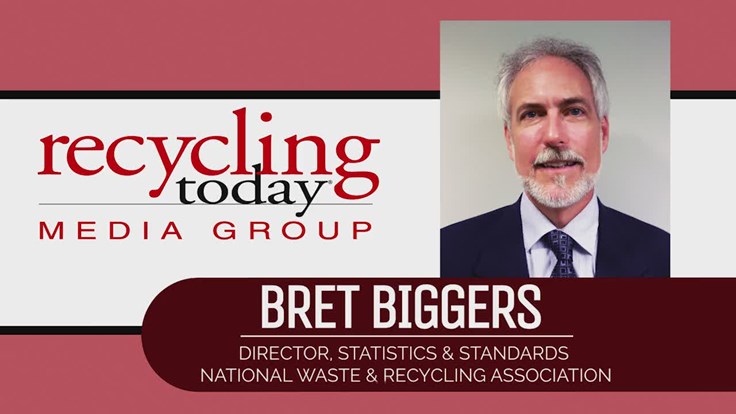Pictured from left to right: Chip Clements, Clements Environmental Corp; P. John Ruth, Jr., CTBH Partners; Harvey Gershman, Gershman, Brickner & Bratton Inc. (GBB); and Stephen Simmons, GBB.
Waste conversion projects can be complicated to get built. From the initial technology, to the procurement, permitting and financing, much needs to be accomplished. During a preconference workshop titled From Concept to Reality – Waste Conversion Project Implementation at the Renewable Energy from Waste Conference in Long Beach, California, Nov. 14, speakers with experience in many areas needed to get projects off the ground provided advice for those seeking approaches to project implementation.
Stephen Simmons, vice president, Gershman, Brickner & Bratton Inc. (GBB), Fairfax, Virginia, led off the discussion by sharing the importance of and what is involved with waste characterization studies. The purpose is to determine the technical specification for the feedstock, such as moisture and level of contaminants. It involves field work and data analysis and ASTM has standards for it.
When it comes time to finance the project, Simmons said, “the banker is going to want to know what is in there.”
The process takes between two and three months and provides a throughout understanding of what is in the waste into a 40 to 50 page report on 30-plus specific materials, including paper, plastics, glass, metals and organics.
He also noted that it is not just about the materials going into the process, “on the other end of the scale is the product values. Different energy products have vastly different values,” he said. Electricity is worth the least.
He provided different examples of technologies, including AD, combustion and advanced technologies.
Harvey Gershman, GBB co-founder and president shared different project procurement approaches. He noted some drivers to waste conversion technologies including diminishing local landfill capacity, state driven diversion goals, local government and industry sustainability, and those companies out there that get elected officials excited about “gold in our garbage.” “Those aren’t good projects,” he said of the gold in our garbage projects.
Gershman also shared that most all projects that go the elected official route get stopped dead in their tracks.”
He advised companies “know what your costs are,” and emphasized that two-thirds of cost is collection.
Gershman laid out the different types of procurement approaches including, Expression of interest, the two-step approach of request for proposal/request for qualifications; request for developers, and invitation for bids. He advised against the invitation for bids, explainiang that it is not a good approach for buying a technology.
“Have a site,” Gershman said is one of the most important components. “It is important to have the process work out that the public and private both feel like they can win,” said Gershman.
Some of the reasons procurements fail, according to Gershman are:
- costs too high;
- ·no site;
- technology risk;
- inadequate waste supply;
- regulatory push back;
- fear of hurting recycling;
- market risk;
- ·no financing; and
- lack of political will.
Gershman also emphasized the need for people dedicated to make project happen, including the technological, legal, communication and financial areas. He also talked about flow control, collection models and zero-waste tipping fees.
He shared a service fee formula which included SF = DS (debt service) +OM (operation and maintenance) + PT (pass through costs) + RPC (recovered products credit) +/- OPB (other payments balance)
“Often overlooked is the financial criteria of the company,” said Gershman. He also said there is no way to prevent legal challenges.
Chip Clements, Clements Environmental Corp., Sherman Oaks, California, recalled in the 1980s and 1990s how 83 waste to energy plans were on the on drawing board in California alone and only three got built.
Challenges in California include still pretty cheap landfills and Assembly Bill (AB) 939 fees, he said. He discussed the emphasis in the state of source separation and shared that it was important to share the message that waste conversion is not supplanting recycling, rather enhancing it.
He said legislative roadblocks to thermal conversion technologies exist in California because the support is for recycling. The problem with conversion technologies in California, he said are that the processes don’t count for diversion, but count for disposal. The “kiss of death” as Clements puts it is that the energy is not considered renewable.
One area showing promise in California is engineered fuel. Cement kilns have achieved a “special permitting pathway” to get used in cement kilns, according to Clements.
Clements noted California still landfills 35 million tons of trash each year. Approximately 20 anaerobic digestion plans are operating in the state, according to Clements estimates. They include various technologies and employ dry, high solids and waste water treatment plants.
“If you can find an existing solid waste facility it is generally easier to do one of these projects if they are already permitted in some way,” says Clements. Doing this, he says “avoids some of the toughest parts of the permits.”
John Ruth, CTBH Partners, Hanover, New Hampshire, discussed tax exempt financing as an option for waste companies. He noted that each state has its own unique criteria and the median issuance is around $20 million dollars.
He shared examples of the use of the financing method by several waste companies. He said, “There is a lot of capacity out there, but just because it is out there doesn’t mean it is yours.”
The REW Conference is Nov. 14-16 at the Westin Long Beach, in Long Beach. California.



